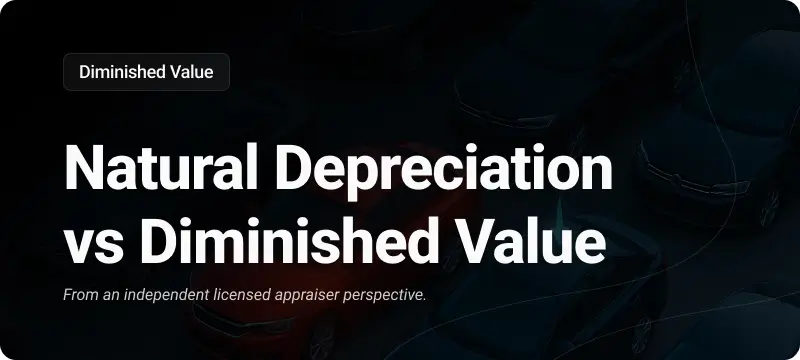
Georgia’s 2025 tort reform—touted as a way to curb “frivolous lawsuits”—quietly rewrites the rules for diminished value (DV) claims, putting thousands of dollars at risk for accident victims. While insurers celebrate reduced liability, drivers face a harder battle to recover fair compensation for their car’s lost resale value. Here’s what changed!
1. Collateral Source Rule Elimination: Shrinking Compensation Pools
- Before 2025: Insurers paid based on actual repair costs (e.g., $12,000 for a rear-end collision).
- After 2025: Insurers only pay what they spent (e.g., $8,000 after discounts), slashing the basis for DV claims.
Example:
A Tesla Model 3 worth $45,000 pre-accident loses $13,500 in value. Under the new rule:
- Old DV Claim: $13,500 (30% loss).
- 2025 DV Claim: Insurer uses $8k repair cost → offers $2,400 (10% of $8k via 17c formula).
Why It Matters: Insurers now control both repair costs and DV calculations, creating a conflict of interest.
2. Stricter “Foreseeability” for Negligent Security Claims
- Before 2025: Property owners (e.g., malls, parking garages) were liable for accidents caused by poor lighting or broken cameras.
- After 2025: Victims must prove the owner received specific warnings (e.g., police reports of prior crimes) about the risk.
Case Study:
An Atlanta driver hit in a dimly-lit parking lot could previously sue the property owner. Now, without a documented crime alert, the claim shifts to the criminal (often uninsured), leaving victims with partial payouts.
3. Blame-Shifting to Criminals: The 20% Loophole
- Before 2025: Stolen vehicle owners were 100% liable for accidents caused by thieves.
- After 2025: Juries must assign partial fault to the criminal, reducing payouts by up to 20%.
Example:
A stolen SUV crashes into your $30,000 Honda Accord, causing $9,000 in DV. Under the new law:
- Insurer Offer: $7,200 (80% of $9k) → You lose $1,800.
Pro Tip: Document police reports and security footage to challenge fault percentages.
4. Gag Rule on Pain/Suffering Damages
- Before 2025: Lawyers could argue emotional distress (e.g., anxiety about selling a damaged car) to justify higher payouts.
- After 2025: Mentioning non-economic damages in DV claims is banned, forcing settlements to focus solely on repair costs.
Impact: Insurers now ignore the human toll of accidents, using technicalities to suppress offers.
How to Fight Back Under Georgia’s 2025 Laws
1. Demand USPAP-Compliant Appraisals
Insurers rely on the outdated 17c formula. Counter with a Uniform Standards of Professional Appraisal Practice (USPAP) report, which factors in:
- Pre-accident value (Kelley Blue Book/NADA).
- Local market trends (e.g., Atlanta’s luxury EV depreciation).
- Repair quality (OEM vs. aftermarket parts) ****.
2. File Claims Before July 2025
Georgia’s 4-year statute of limitations (O.C.G.A. § 33-4-6) still applies, but reforms take full effect in 2026. Act now to avoid stricter rules.
3. Leverage the DOI Complaint Threat
Cite O.C.G.A. § 33-4-7 to demand a 50% penalty + attorney fees if insurers delay claims. Example:
- Insurer Offer: $3,000.
- Post-Complaint Settlement: $4,500 + legal fees.
4. Target Hybrid/Electric Vehicles
EVs depreciate 42% faster post-accident (vs. 12% for gas cars). Use 2025’s expanded EV tax credits to argue higher pre-accident values ****.
Case Study: Beating State Farm’s 17c Formula in 2025
Scenario
- Vehicle: 2023 Ford F-150 ($55,000 pre-accident).
- Damage: Rear-ended → $18,000 repairs.
- Insurer Offer: $5,500 (10% of repairs).
Action
- USPAP appraisal showed $16,500 DV (30% loss).
- Filed DOI complaint citing lowball tactics.
- Result: $14,000 settlement in 14 days.
Conclusion: Protect Your Rights Before It’s Too Late
Georgia’s 2025 reforms tilt the scales toward insurers, but strategic action can still secure fair payouts. Key takeaways:
USPAP appraisals override the 17c formula.
Documentation (photos, police reports) is your armor against blame-shifting.
Act now—reforms escalate in 2026.
Need Help? Get a Free 2025 Appraisal to lock in your claim under current laws.



